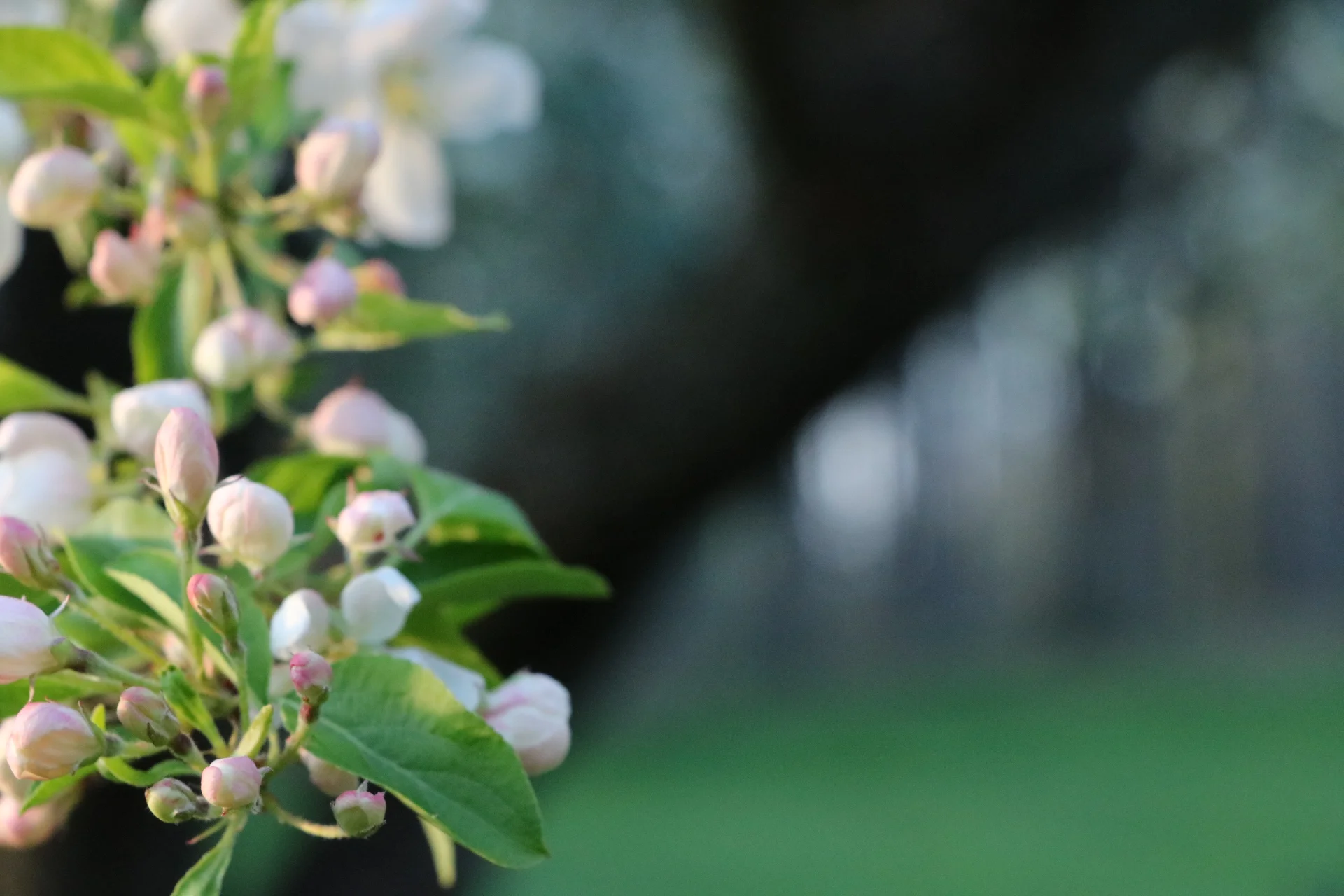Summer in the Beehive
/Summertime can be an “easy” time for beekeepers, as the nectar flow slows down, we come to the end of swarm season, and the bees are doing their thing in the hives.
At this point in the season, the nectar flow is beginning to slow down and we will enter the “dearth” of summer. This just means there is not as much food available to the bees in the natural landscape. You’ll start to notice a few things happening in your hives during the summer;
decrease in comb building - as nectar comes in more slowly, the bees build new comb more slowly. If you have a newly established colony that has not drawn out at least a full brood box, you may consider feeding your bees through the summer months.
decrease in honey production - again, related to the amount of nectar coming in. Less nectar = less honey being made.
bees on the front of the hive - we like to think this is just the bees hanging out on their front porch when it’s hot outside. You may see large clusters of bees on the face of the hive during hot, humid weather. When there are too many bodies inside and it begins to get too warm, bees will move outside, often fanning their wings to push air through the hive to cool it down, keeping brood at safe temperatures.
grumpier than normal attitudes - some colonies get a little testy during the summer dearth and are not as tolerant of hive inspections or other “visiting.” They’re simply reacting to the decrease in food coming in and being more defensive of it. This usually passes when th fall nectar flow begins in mid-August.
Here are the things on our “To-Do List” for our apiary during the summer months.
Harvest Spring Honey
We typically pull our honey supers off of our hives around the Fourth of July. We’ll pull only frames that are fully capped to ensure that the honey has just the right water content and will not ferment. As a general rule (and we all know there are no rules in beekeeping), as long as the frames are 80% capped you should be ok. We’d suggest testing your honey with a refractometer if you’re uncertain.
There are many ways to remove honey from the hive. We typically use fume boards to clear our supers, then pull off the entire box once clear of bees. At home, when only harvesting from a few hives, I often just pull individual frames, give them a swift tap on the hive to knock the bees off, then place the frame into a waiting, empty super with a cover on it.
Harvested frames can be extracted right away or stored (we put them in the freezer) for later extraction.
Do you have to harvest honey? Nope. If you leave supers on the hives, they may begin using the stored honey as we get farther into the dearth of summer. That’s ok, unless you are trying to maximize honey production.
Inspect Regularly
We usually inspect every two weeks. Things slow down for the hive a bit now that we’ve come to the end of the nectar flow, so comb building isn’t quite as rapid and swarming activity slows. This doesn’t mean that swarming won’t happen, so be mindful of that when doing your regular inspections. The later into the season we get, the less likely a swarm (or split) is to build up enough before the weather turns again.
The three things we’re always looking for during an inspection are:
queen health - do you see eggs? larvae? Is the brood pattern looking good?
bee space - do you need to add another box to the colony because they are getting full? Is the colony struggling and maybe they would benefit from removing a box?
anything else weird going on - are there ants on your inner cover? yellow jackets in the hive?
With regular inspections, you have time to react should you notice an issue. Questions about something you are seeing? Just give us a call or send an email. We’re happy to help.
Mite Treatments
We’ve begun treating all of the hives (excluding new colonies) in our apiary at the store on a three treatment/year schedule. We’ve already treated with FormicPro in the spring, and will follow up with either another formic acid treatment or a heat treatment (we use the Mighty Mite Killer thermal unit). With bee populations being at their peak now, the mite populations often are, too. Now is a good time to treat if that’s part of your plan, or at least to do a mite count and determine your mite load.
We know there are many options and even more opinions on mite treatments. We’re happy to share our thoughts on it if you have any questions!
Feeding Colonies
If fall honey production is your goal, you may consider feeding your bees a liquid feed throughout the dearth. This will ensure that the brood boxes are filled with “honey” when the fall nectar flow starts, thus allowing the bees to fill your honey supers rather than empty space in the brood boxes.Placing honey supers back on the hives once the goldenrod begins to bloom will ensure that you are harvesting honey from fall blooming flowers.

